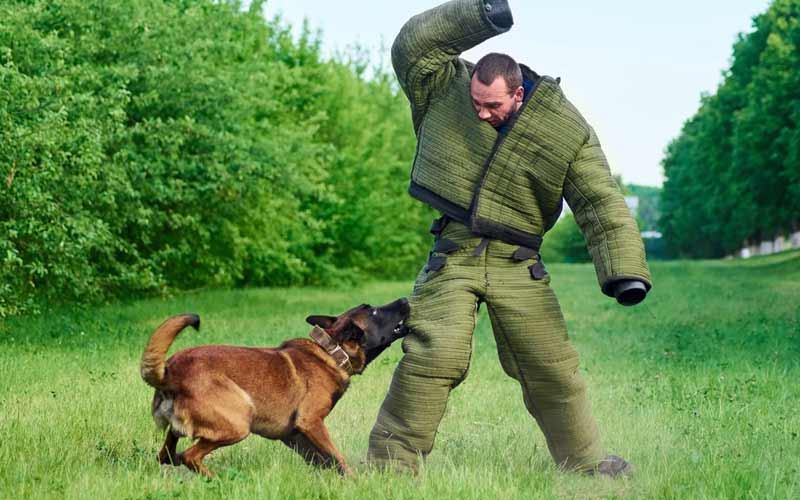
Every dog owner desires a well-behaved and protective companion. Striking the right balance between a calm and protective dog is crucial. While you want your furry friend to be friendly and approachable, it’s also essential that they can provide protection when needed. In this blog, we’ll explore effective ways to train your dog to be both calm and protective, ensuring a harmonious coexistence with your pet.
Establish a Strong Foundation with Basic Training
Before diving into protective training, make sure your dog has a solid foundation in basic obedience commands like sit, stay, and come. These commands lay the groundwork for advanced training and help your dog understand your expectations. Obedience training builds trust and establishes you as the pack leader, making it easier to teach your dog when to be protective.
Socialize Your Dog from an Early Age
Socialization is key to developing a well-rounded, protective dog. Expose your dog to various people, animals, and environments from a young age. This helps them become comfortable and confident in different situations. A well-socialized dog is less likely to become overly aggressive or anxious when encountering new people or situations.
Introduce Controlled Guard Dog Training
To train your dog to be protective, consider enrolling them in a controlled guard dog training program. These programs are conducted by professional trainers who can teach your dog to differentiate between real threats and everyday situations. Controlled training ensures your dog understands when protection is necessary and when to remain calm.
Teach the ‘Alert’ Command
Teaching your dog the “alert” command is a valuable part of protective training. When your dog hears this command, they should become alert and attentive, but not necessarily aggressive. Use positive reinforcement techniques like treats and praise to reinforce the desired behavior. This command helps your dog stay vigilant without unnecessarily escalating situations.
Practice Controlled Aggression
While it’s essential for your dog to be protective, it’s equally crucial that their aggression is controlled. Practice controlled aggression exercises with your dog, such as bite inhibition training with a professional. This ensures your dog can respond assertively when needed without causing harm.
Use Positive Reinforcement
Positive reinforcement is a highly effective method for training a protective yet calm dog. Reward your dog with treats and praise when they exhibit the desired protective behavior. Avoid using punishment or harsh training methods, as these can lead to anxiety or aggression issues. Positive reinforcement creates a positive association with protective behaviors.
Develop Strong Bond and Communication
Building a strong bond with your dog is essential for successful protective training. Spend quality time with your pet to develop trust and open lines of communication. When your dog trusts you, they are more likely to respond to your cues and commands effectively.
Gradual Exposure to Potential Threats
Expose your dog gradually to potential threats or unfamiliar situations. This allows your dog to adapt and understand that not every new person or situation is a threat. Controlled exposure helps prevent overreacting and ensures your dog remains calm in most situations.
Reinforce Protective Behavior Through Play
Incorporate protective behavior into playtime with your dog. Use toys and games to reinforce commands like “watch” or “guard.” This makes learning fun for your dog and reinforces their protective instincts in a controlled and enjoyable way.
Seek Professional Guidance
Training a dog to be protective while remaining calm requires expertise. Consider seeking guidance from professional dog trainers or behaviorists who specialize in protective dog training. They can provide personalized training plans and address any specific concerns or challenges you may encounter.
Maintain a Safe Environment
Even with protective training, it’s essential to maintain a safe environment for your dog and others. Ensure your dog is properly secured, and use caution when introducing them to new people or animals. Always prioritize safety to prevent any unwanted incidents.
Training your dog to be both calm and protective is achievable with patience, consistency, and the right techniques. By establishing a strong foundation through obedience training, socializing your dog, and seeking professional guidance, you can ensure that your furry companion knows when to protect and when to remain composed. Striking this balance creates a harmonious and loving relationship between you and your protective yet calm canine friend.







